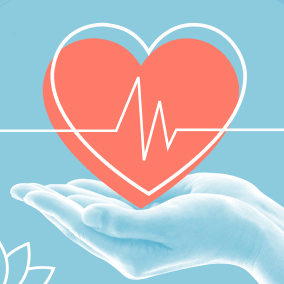The arrival of spring is usually something that will make us feel happier and healthier. But not always.
Sometimes, even when the days are starting to get warmer and brighter, the new season instead seems to bring a wave of low energy and a dip in mood.
This is sometimes known as ‘spring asthenia’, or spring fatigue or springtime lethargy.
There are a number of theories when it comes to spring asthenia or spring fatigue. While not medically recognised as a diagnosable condition, many people are familiar with the concept of hitting a bit of a slump as the season shifts. But usually, these changes will be temporary and manageable.
However, it’s important to note that changes in mood and energy that seem to occur at certain times of the year could also be signs of seasonal affective disorder (SAD), a form of depression which the NHS states can sometimes affect people in the summer as well as in winter.
“It causes symptoms of depression to emerge in the late spring to early summer months. Unlike the more prevalent fall-onset SAD that is linked to shorter days and reduced sunlight exposure in the winter months, the exact causes of spring-onset SAD are not as well understood,” says Dr Ashwin Sharma, a clinical content lead and medical doctor at online pharmacy MedExpress.
“Some theories suggest the lengthening days and increased light exposure in spring may disrupt circadian rhythms and melatonin production in certain individuals, triggering depressive symptoms,” Sharma adds. “Others hypothesise that allergies or sudden temperature changes common during seasonal transitions could play a role.”
SAD symptoms
According to the NHS
- a persistent low mood
- a loss of pleasure or interest in normal everyday activities
- irritability
- feelings of despair, guilt and worthlessness
- feeling lethargic (lacking in energy) and sleepy during the day
- sleeping for longer than normal and finding it hard to get up in the morning
- craving carbohydrates and gaining weight
- difficulty concentrating
- decreased sex drive
What are the signs and symptoms of Spring asthenia?
According to Sharma, depression symptoms will be similar to those people might experience at any time of year.
“[They] could include feelings of sadness, hopelessness, and despair, loss of interest in normally enjoyable activities, fatigue and low energy levels, trouble concentrating and making decisions,” he says.
People may also experience “changes in sleep patterns and appetite, restlessness, irritability and anxiety, [plus] physical symptoms like headaches.”
Always speak with your own doctor if you are experiencing signs of depression and ongoing fatigue.
How do you manage it?
If what you’re experiencing is a temporary and minor dip in energy as the season changes, self-care and listening to your body is a good idea. For example, do you need more rest? Or could introducing more physical activity provide a boost?
But if you’re experiencing symptoms that could be the onset of summer depression, it’s important to seek support. As with other types of depression, a combination of therapies is often most effective.
“This may involve medication like antidepressants, psychotherapy to reframe negative thoughts and improve coping skills, and lifestyle changes such as regular exercise, a balanced diet, stress management techniques, and establishing good sleep hygiene,” says Sharma.
“If an individual suspects they may be suffering from SAD, they should see a qualified healthcare provider, such as a psychiatrist or psychologist, to get properly diagnosed and discuss the most appropriate treatment plan for their specific situation and symptoms.
“With proper care and management strategies, the severity and duration of SAD symptoms can be significantly reduced, allowing those affected to better navigate the seasonal transitions and maintain their mental wellbeing.”












